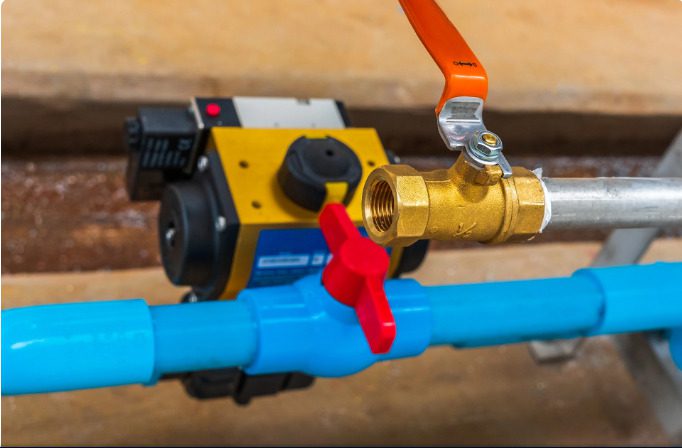A water valve is a device found in almost every home that controls the flow of water. It’s one of those simple, yet essential pieces of plumbing. In this blog post, we’re going to discuss what a water valve is and why it’s important. We’ll also provide some tips on how to maintain and repair them. So, if you’re curious about water valves or want to learn more about them, read on!
What is a water valve and what does it do?
A waste water valves is a component of a plumbing system that regulates the flow of water. It can be found in both residential and commercial settings, and its main purpose is to keep water from flooding areas or spilling over onto stairways or other surfaces. In addition to functioning as a crucial safety feature, a water valve can also help conserve utilities by regulating the amount of water used in a given area.
Types of water valves
A water valve is a mechanism that controls the flow of water in a system. They come in various types, each with its own purpose. Here are four types of water valves:
1) On-off valve: This type of valve is typically used to control the flow of water while it’s being used, for example when you’re taking a shower or washing your dishes. It has one handle that you turn on and off.
2) Ball valve: This type of valve is used to control the flow of water in systems with multiple pipes. It has two round disks that open and close when you turn the handle.
3) Spring-loaded ball valve: This type of valve uses a spring to open and close the disk. When you turn the handle, the disk moves up so that the water can flow through it, and then it automatically closes again once you stop turning the handle.
4) Drip faucet: A dripping faucet is like a regular faucet, but instead of having an on/off switch, it has a lever that you move to control how much water comes out.
When is it time to replace a water valve?
There is no definitive answer to this question, as the decision will depend on a number of factors including the age and condition of the valve, the type of system it is fitted to, and the amount of water used. However, a rule of thumb suggests that a water valve should be replaced every 10-15 years on average, depending on the specific situation.
In general, valves are subjected to extensive wear and tear over time, which can lead to leaks or poor performance. Additionally, some types of valves may become obsolete due to technological advancements or changes in regulations. As such, it is important to periodically inspect your system for signs of wear and replace any necessary parts as needed.
What is a water valve and what does it do?
Water valves are important devices in any home. They control the water flow to and from your plumbing system, ensuring that your fixtures get the water they need when you need it.
A water valve is a simple device with two parts: a stem and a handle. When you turn the handle, the stem opens the valve and water flow through it. If you turn the handle too far, the valve will close and stop the water flow.
A water valve is crucial for keeping your plumbing system functioning properly. If it becomes clogged or defective, water won’t be able to flow freely and your fixtures may not operate as they should. A water valve can also become blocked if there’s debris or sediment built up inside it.
If you’re having trouble understanding how your water valve works, don’t worry – most repairs or replacements can be handled by a qualified professional. Contact a plumber today if you have any questions about your plumbing system or your water valves!
How a water valve works
A water valve is a crucial part of any home’s water distribution system. It helps ensure that water flows smoothly and consistently from the faucet to your sink. A water valve can also help you conserve water when you’re using the shower or washing your dishes.
A water valve is made up of two parts: the body and the seat. The body is the part that sits in the water line and connects to the seat, which is the part that sits on the faucet. When you turn on the faucet, the valve opens, allowing water to flow from the line into the body. The seat then closes off the flow of water, preventing it from going back into the line.
Water valves are often equipped with a shut-off valve. This allows you to stop all water flow from a particular fixture when you need to, like when you’re cleaning up after a kitchen spill.
When to replace a water valve
A water valve is an important part of any house and is typically replaced when it begins to malfunction. Replacing a water valve can save you money in the long run by preventing costly repairs. Here are some signs that your water valve may need to be replaced:
- The valve becomes difficult to turn
- Water leaks from the valve
- The valve clicking or grinding sound
Conclusion
A water valve is an essential part of any plumbing system and should be regularly inspected for damage. By understanding what a water valve does and why it is important, you can keep your home plumbing running smoothly and avoid expensive repairs down the road. If you have any questions about water valves or other plumbing issues, give us a call at our 24/7 hotline!





























